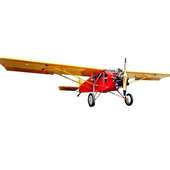- The limits of tariffs, then and now (4/8/25)
- Good Intentions, but at what cost? (4/4/25)
- Honoring Nebraska’s Vietnam Veterans (4/3/25)
- Keeping an eye out for “Humphrey’s Executor” (4/1/25)
- Paleomagnetism and the pendulum of power (3/28/25)
- Ones, zeros, and an expensive illusion (3/27/25)
- Restructuring the Department of Ed: A familiar pattern (3/25/25)
Editorial
Law enforcement, privacy in aerial dogfight
Wednesday, May 30, 2012
Smile, you're on camera.
Even in small town rural Nebraska, it's hard to go anywhere without having your movement electronically observed, whether to the store, bank, school or even church.
That list apparently now includes the feedlot.
Nebraska's congressional delegation has sent a letter to the administrator of the Environmental Protection Agency concerning aerial surveillance inspections of regulated livestock operations in Nebraska.
It seems the EPA's Region 7 Office of Enforcement has conducted a series of such flights in the past several months to enforce the Clean Water Act.
The letter raises some legitimate concerns.
Such as:
* Are the flights strictly to enforce that law?
Does the agency follow up with on-the-ground inspection?
* How many flights are involved, and how does the agency decide which operations to fly over?
* How long has this been going on, and how has the information been used? Is it video or still images, and what happens to it?
* Are local agencies informed, such as the Nebraska Department of Environmental Quality, which may be doing its own inspections?
* What else is being photographed?
[The following two paragraphs are revised to correct attribution:]
"As you might imagine, this practice has resulted in privacy concerns among our constituents and raises several questions," according to the letter.
As U.S. Rep. Adrian Smith noted in a "These operations are in many cases near homes and landowners deserve legitimate justification given the sensitivity of the information gathered by the flyovers. Nebraskans are rightfully skeptical of an agency which continues to unilaterally insert itself into the affairs of rural America."
On the other hand, many of those same agricultural interests have no problem accepting aerial "surveillance" when it's part of a farm subsidy program. Law enforcement has long used aircraft for everything from catching speeders to busting marijuana growing operations.
Real estate agents, Smith's background, use satellite imagery and Internet mapping -- even with ground-level views -- extensively.
Still, there's something ominous about Big Brother spying on our back yards, especially this time of year when we all enjoy outdoor activities.
As aerial surveillance becomes more and more accessible to private and public entities through technology like drones, the right to privacy must be carefully guarded and balanced with the legitimate needs of law enforcement.

